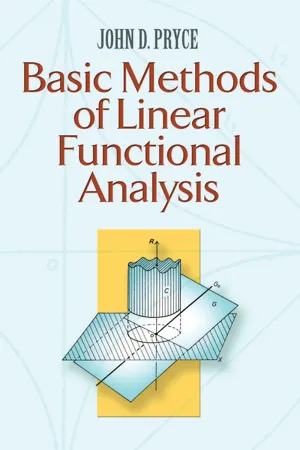
- 320 pages
- English
- ePUB (mobile friendly)
- Available on iOS & Android
Basic Methods of Linear Functional Analysis
About This Book
An introduction to the themes of mathematical analysis, this text is geared toward advanced undergraduate and graduate students. It assumes a familiarity with basic real analysis, metric space theory, linear algebra, and minimal knowledge of measures and Lebesgue integration, all of which are surveyed in the first chapter.
Subsequent chapters explore the basic results of linear functional analysis: Stone-Weierstrass, Hahn-Banach, uniform boundedness and open mapping theorems, dual spaces, and basic properties of operators. Additional topics include function spaces, the Tychonov and Alaoglu theorems, Hilbert spaces, elementary Fourier analysis, and compact self-adjoint operators applied to Sturm-Liouville theory. "The author has a delightfully lively style which makes the book very readable, " noted the Edinburgh Mathematical Society, "and there are numerous interesting and instructive problems."
Frequently asked questions
Information
1
PRELIMINARIES
1. Metric spaces and topological spaces







Table of contents
- Cover
- Title Page
- Copyright Page
- Contents
- Introduction
- 1 Preliminaries
- 2 Normed spaces – basic properties and examples
- 3 Basic theory of operators and functionals
- 4 Hilbert spaces and related topics
- 5 Dual spaces
- 6 Infinite products and related topics
- 7 Operators
- Appendix
- References and suggested reading
- Index of symbols
- Index